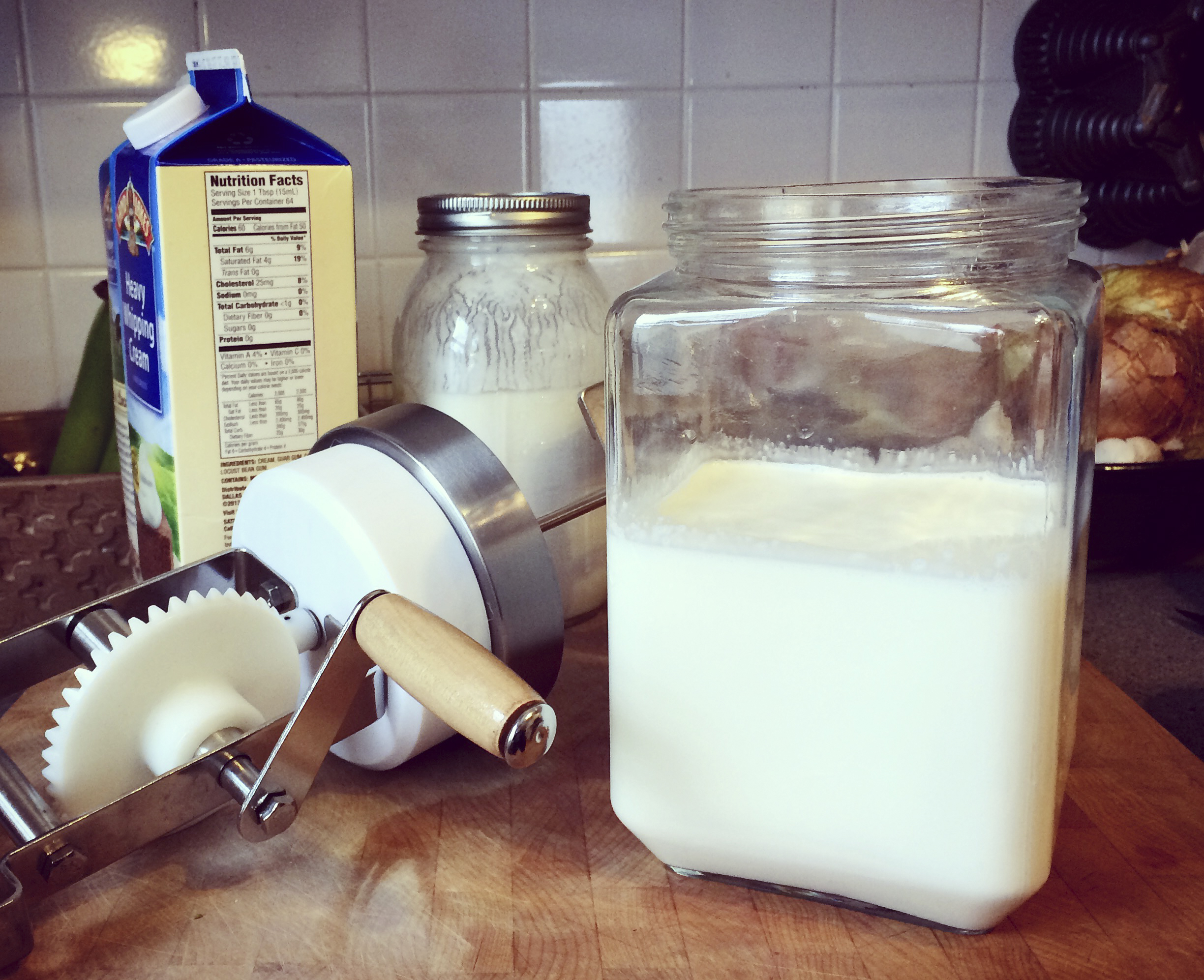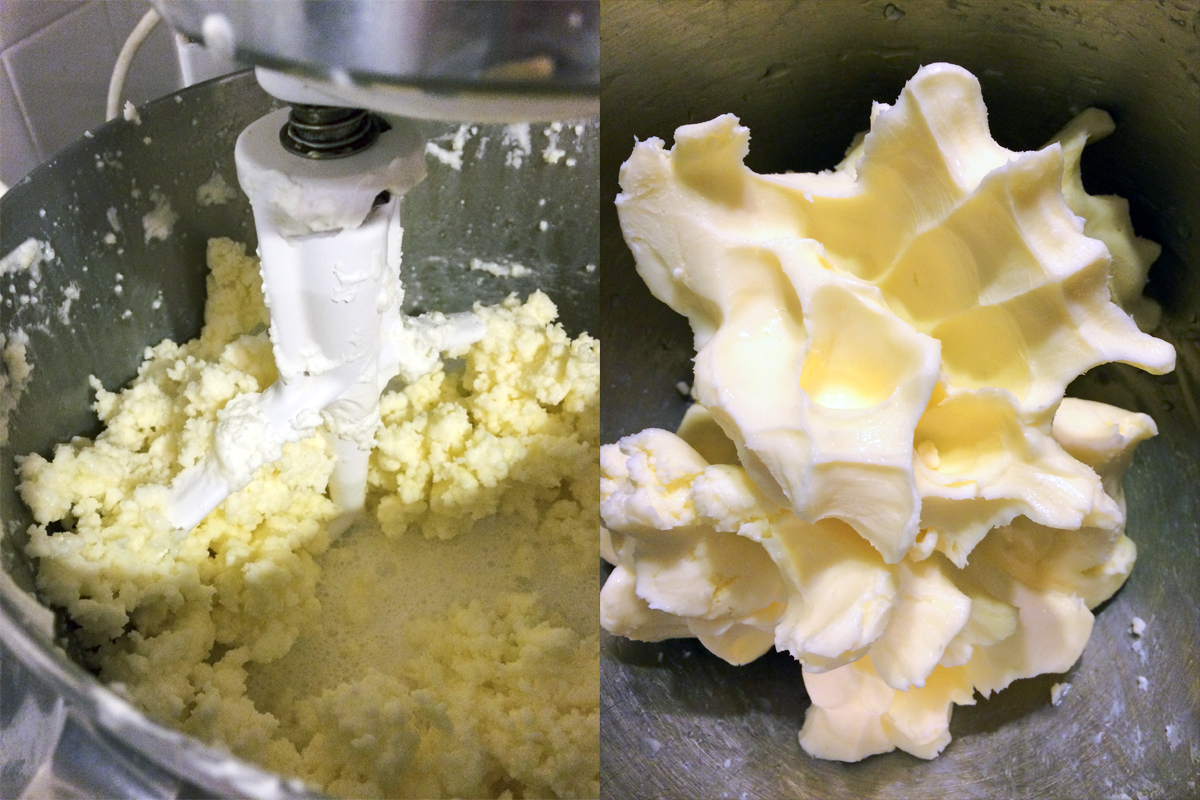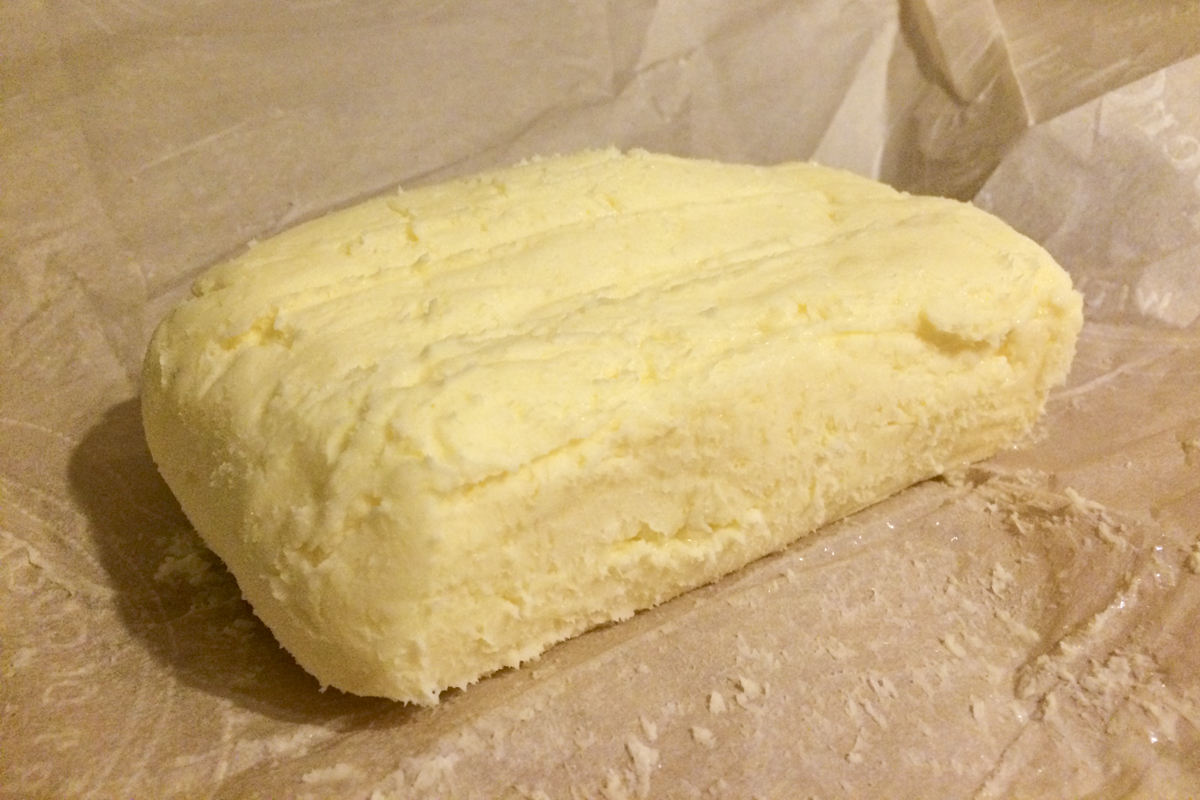
My mother got me a classic butter churn for Christmas. Whoopie! Only problem? I need a cow. (Not to be confused with “having a cow,” as my daughter likes to say.) Every time I make a cultured milk product like yogurt or cheese, I wish for a cow of my own, though I’m not sure the City of Minneapolis will go that far for urban agriculture.
But I digress. Let’s talk about cultured butter. This butter is distinctly different from sweet cream butter, which is made from plain cream. “Cultured” means that the cream has active bacterial cultures in it before being churned into butter. This inoculation probably happened by accident “in the olden days” since the cream was collected from several milkings and naturally fermented while waiting around. Modern cultured cream is now inoculated with Lactococcus-type bacteria, the same bacteria that is used to make cheddar cheese. Still preferred in Europe, this butter is dense, tangy and more “buttery” tasting than American sweet cream butter.
Cultured butter is dead easy to make. If you use the hand cranked butter churn, it takes a bit of elbow grease as cultured cream is much thicker than plain cream. Or you can use a stand or hand mixer for faster results. You whip the cream until the emulsion of the milk breaks, separating the fat from the liquid. This takes a lot of friction, so you’ll move through standard stiff-peaked whip cream and keep on going. If you’re using a mixer, keep an eye on it once you get to stiff peaks. I made the mistake of walking away, only to find liquid buttermilk splashing all over my kitchen! The byproduct of cultured butter is real buttermilk, which is a bit thinner and more flavorful than the store-bought buttermilk we started with.
I vastly prefer cultured butter over sweet cream butter. The butter has a denser texture and slightly tangy flavor. You will just die making hollandaise sauce with this. #swoon If anyone has some extra, fresh cows milk, call me!

